How 3 Simple Ingredients Create an Unforgettable Steak Marinade
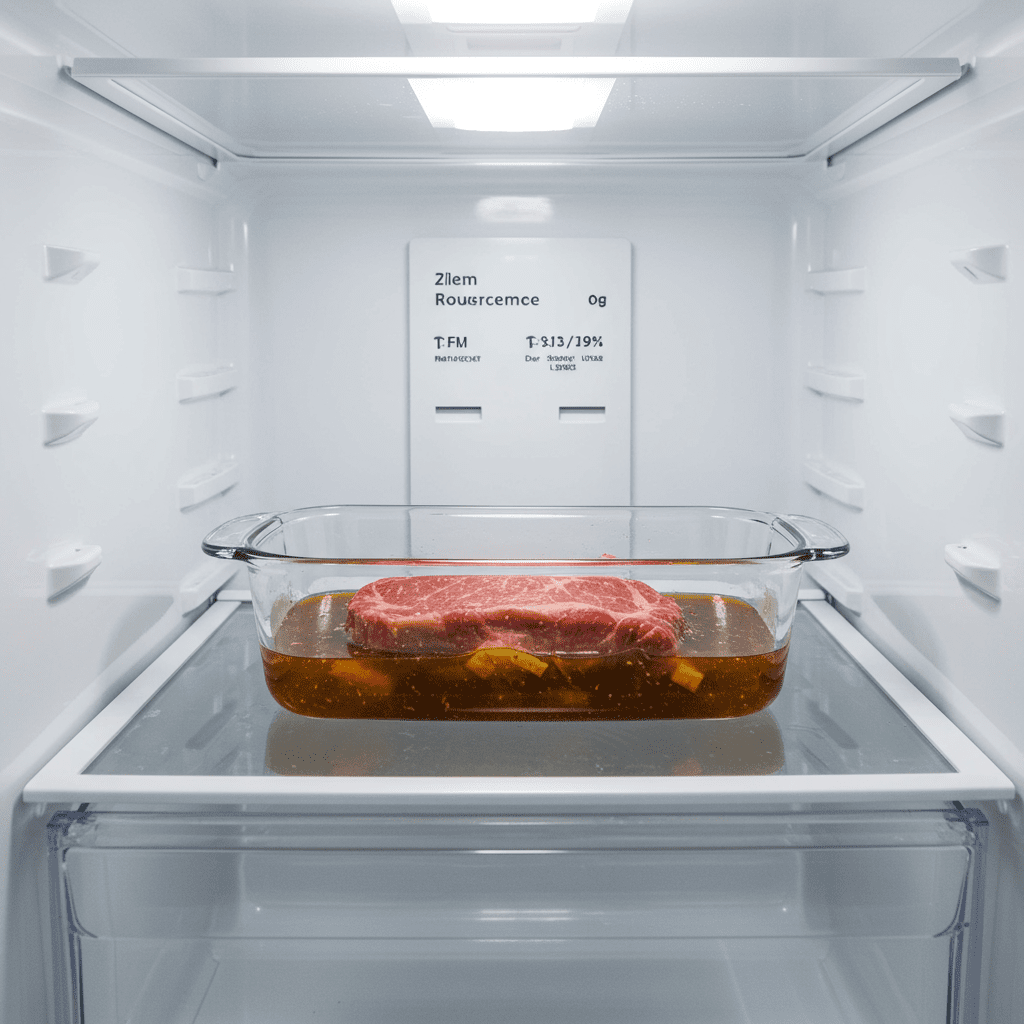
Have you ever wondered how restaurants get their steaks so consistently flavorful and tender? You might think it requires a long list of secret ingredients, but I’m here to tell you that the most effective solution is often the simplest.
As a dietitian, I’m a huge fan of methods that deliver maximum flavor with minimal fuss, from this marinade to a 20-minute shrimp egg roll bowl, and this 3-ingredient steak marinade is my absolute favorite. It relies on the powerful synergy of balsamic vinegar, soy sauce, and fresh garlic to transform even modest cuts of meat into something truly special.
Forget the bottled stuff—this is your new go-to for steak, chicken, and more.
- What’s the Magic Behind This Simple Marinade?
- Does the Quality of Your Ingredients Really Matter?
- How Does a Marinade Actually Make Steak Tender?
- Which Steak Cuts Benefit Most From This Marinade?
- Are You Following These Critical Food Safety Rules?
- What’s the Perfect Amount of Time to Marinate Steak?
- Can I Use This on More Than Just Steak?
- How Should I Cook the Steak After Marinating?
- Conclusion
What’s the Magic Behind This Simple Marinade?
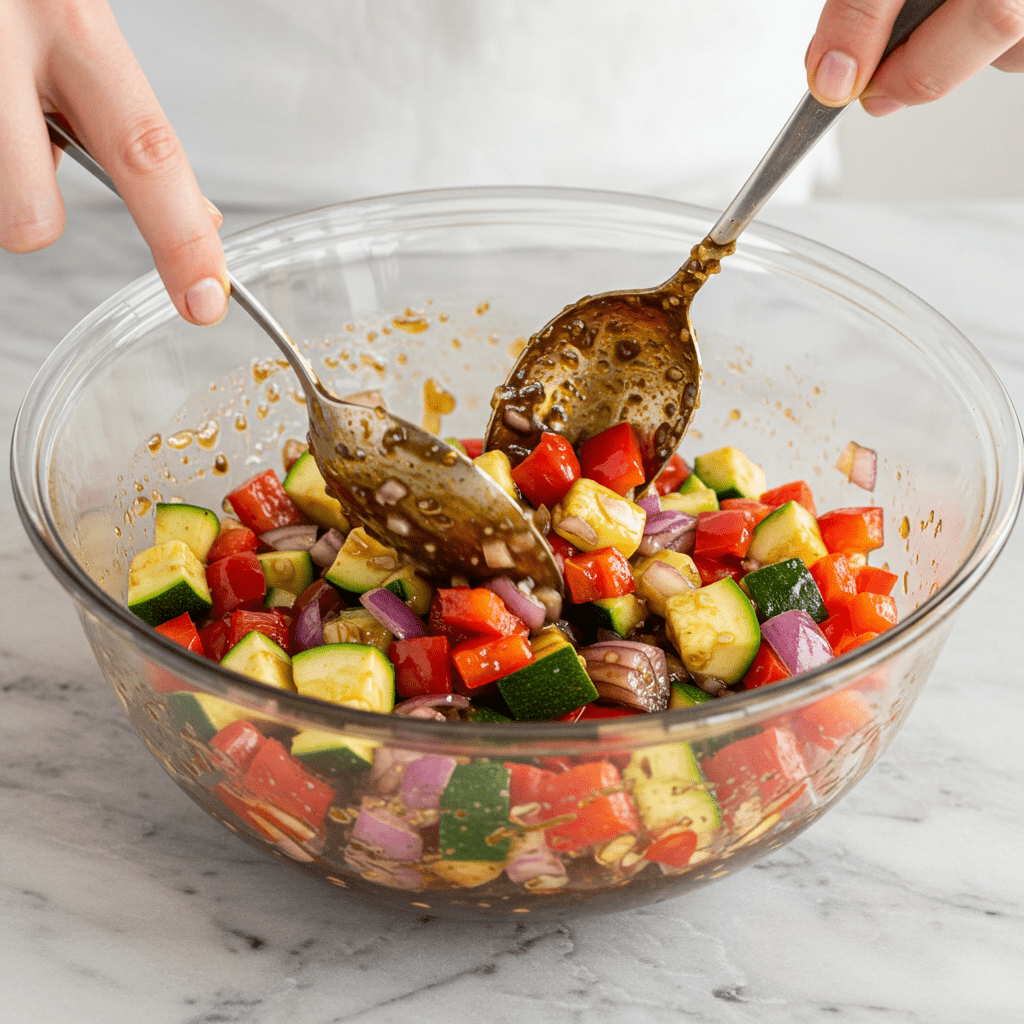
At its core, this marinade is a perfect example of culinary science in action. Each ingredient plays a critical role.
The balsamic vinegar provides the acid, which begins to break down the tough connective tissues in the meat, a process that results in a more tender bite. The soy sauce is the source of salt and umami; salt not only seasons the meat deeply but also helps the muscle cells retain moisture during cooking, ensuring a juicier result.
Finally, fresh garlic provides the aromatic foundation, infusing the steak with a pungent, savory flavor that complements the other ingredients. It’s a classic acid-salt-aromatic combination that chefs have relied on for centuries.
Does the Quality of Your Ingredients Really Matter?

While this recipe is famously simple, the quality of your three ingredients does make a difference. For the balsamic vinegar, you don’t need a pricey, aged variety; a good quality, mid-range balsamic from the supermarket will work perfectly.
The key is to avoid “balsamic glaze,” which often has added sugars and thickeners. When it comes to soy sauce, a standard brewed soy sauce is great.
If you’re gluten-intolerant, tamari is an excellent substitute. For a lower-sodium option, you can use low-sodium soy sauce or coconut aminos, though the latter will lend a slightly sweeter flavor.
Lastly, always use fresh garlic. The pre-minced jarred variety can have a tinny, bitter aftertaste, while garlic powder lacks the bright, pungent flavor of fresh cloves.
How Does a Marinade Actually Make Steak Tender?

The tenderizing power of this marinade comes primarily from the acetic acid in the balsamic vinegar. According to food science experts at Serious Eats, acids work by denaturing the proteins on the surface of the meat, effectively “unwinding” the tight coils of muscle fibers.
This creates a softer texture. However, there’s a limit to its effectiveness.
A marinade only penetrates a few millimeters into the meat, so its tenderizing effect is most noticeable on thinner cuts. Furthermore, the soy sauce contributes to the Maillard reaction—the chemical process responsible for the delicious browning and crust that forms when you cook the steak.
The sugars and proteins in the soy sauce help create that savory, complex flavor we all crave.
Which Steak Cuts Benefit Most From This Marinade?
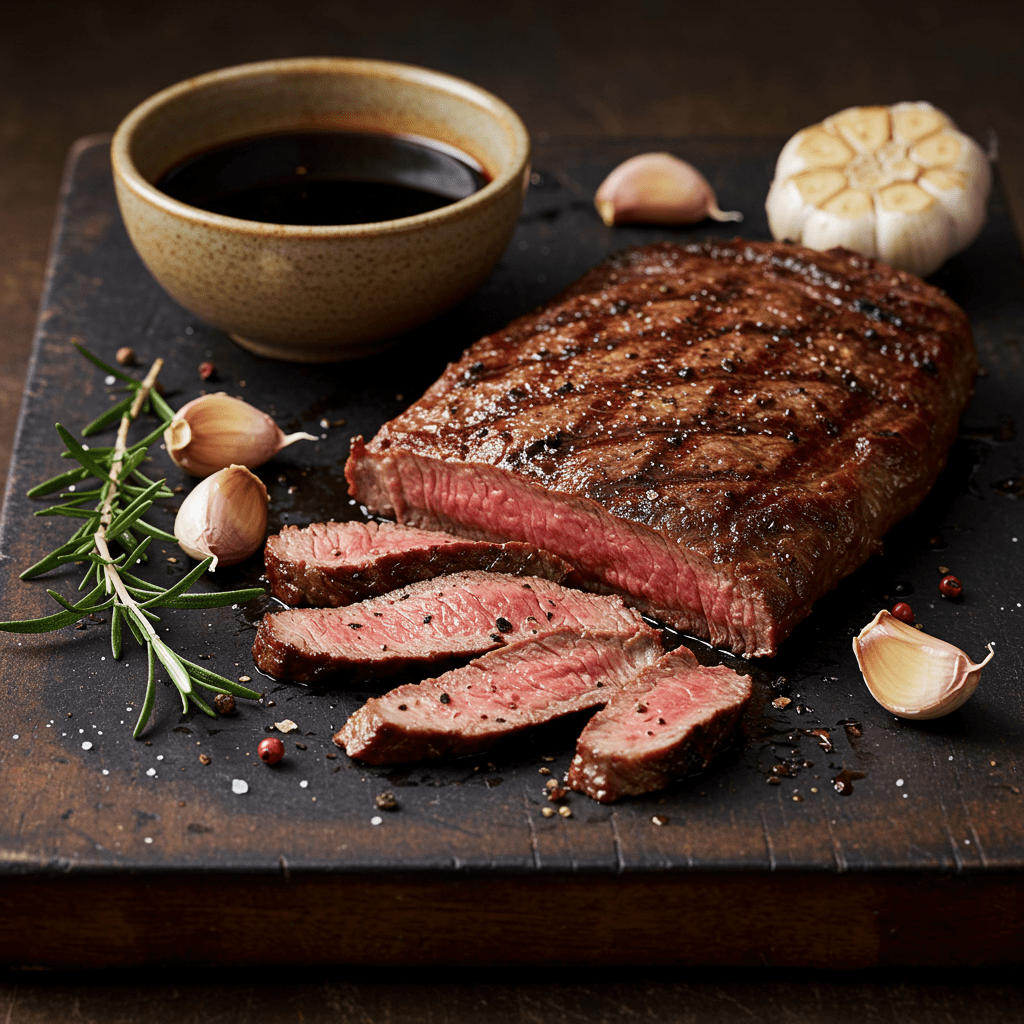
This marinade is the best friend of leaner, tougher, and more affordable cuts of steak. Because it excels at tenderizing and adding flavor, it’s perfect for cuts that have a lot of muscle fiber but less intramuscular fat (marbling).
I highly recommend using it on:
- Flank Steak: A lean, flavorful cut with long muscle grains that soak up marinade beautifully.
- Skirt Steak: Even more fibrous than flank, it’s incredibly rich in flavor and becomes wonderfully tender after marinating, making it the perfect choice for healthy and delicious steak tacos.
- Sirloin Steak: A budget-friendly option that benefits greatly from the added flavor and tenderness.
- Flat Iron Steak: A well-marbled but still firm cut that becomes exceptionally tender.
You can certainly use this on more premium cuts like a New York strip, but I’d advise against using it on highly marbled cuts like a ribeye or a delicate filet mignon, as their natural texture and flavor don’t require this level of enhancement.
Are You Following These Critical Food Safety Rules?
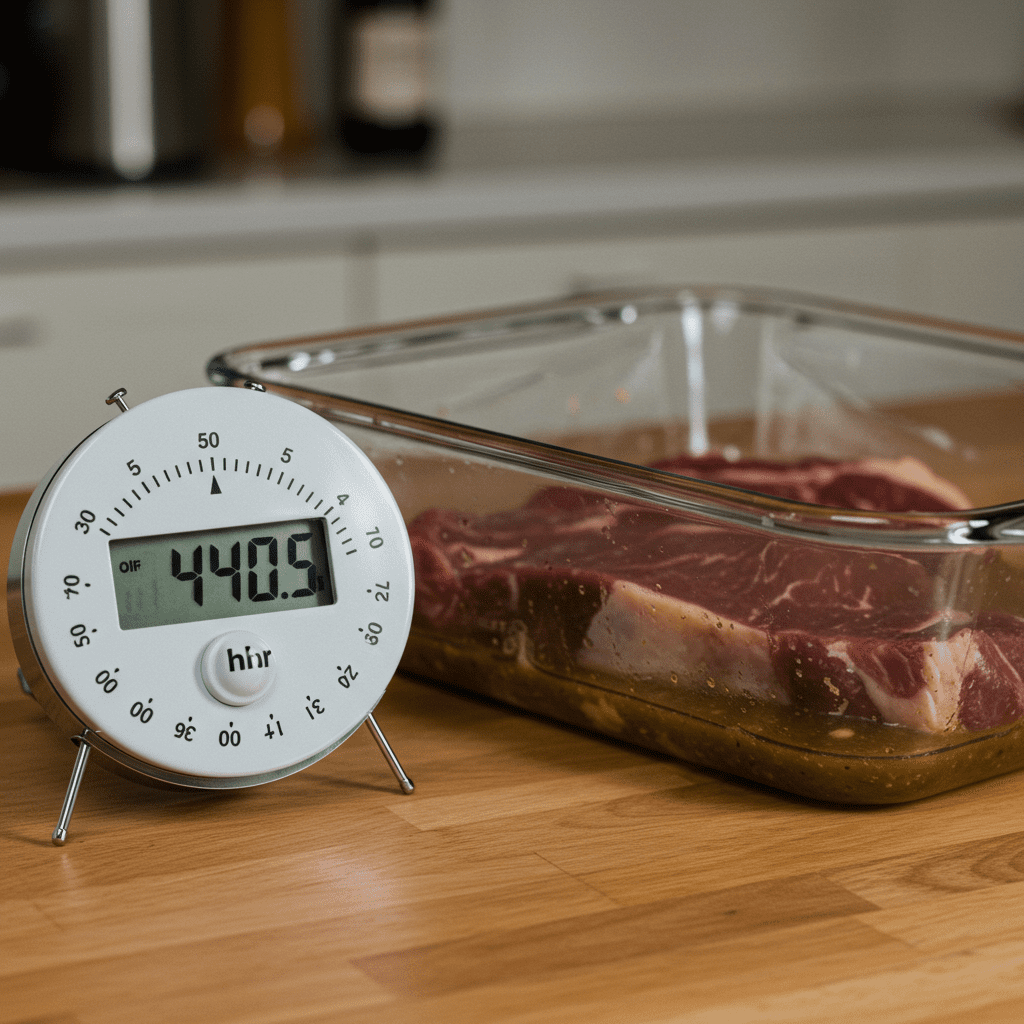
One of the most critical aspects of marinating, and one I always stress as a dietitian, is food safety. Raw meat can harbor harmful bacteria, and how you handle your marinade is key to preventing foodborne illness.
According to the USDA, you must always marinate your food inside the refrigerator. Leaving meat to marinate on the counter, even for a short time, can allow bacteria to multiply to dangerous levels.
The most important rule is to never reuse a marinade that has been in contact with raw meat. If you want to use some of the marinade as a sauce, be sure to set a portion aside before it touches the raw steak. Discard the used marinade immediately once you remove the meat for cooking.
What’s the Perfect Amount of Time to Marinate Steak?

The duration of marinating is a delicate balance. You want to give the ingredients enough time to work their magic, but over-marinating is a real problem.
- Minimum Time: For a quick flavor boost, even 30 minutes in the fridge will make a difference.
- Ideal Time: The sweet spot for cuts like flank or sirloin steak is between 4 and 8 hours. This allows for good flavor penetration without compromising the texture of the meat.
- Maximum Time: I would not recommend marinating steak for more than 12-24 hours. After a certain point, the acid in the balsamic vinegar will continue to break down the proteins, causing the surface of the meat to become mushy and unpleasantly soft.
Can I Use This on More Than Just Steak?

This marinade is a true workhorse in the kitchen and isn’t just for beef. Its balanced flavor profile makes it incredibly versatile.
- For Chicken: It’s absolutely fantastic on chicken thighs or breasts. Marinate boneless, skinless chicken breasts for about 2-4 hours. Chicken thighs, being more robust, can go for 4-6 hours.
- For Pork: Try it on pork chops or a pork tenderloin. Marinate for 4-8 hours for a juicy and flavorful result.
- For Vegetables: This is my secret weapon for amazing grilled vegetable skewers. Toss chunks of bell peppers, red onions, zucchini, and whole mushrooms in the marinade for about 30 minutes before grilling. The marinade caramelizes beautifully on the veggies.
How Should I Cook the Steak After Marinating?
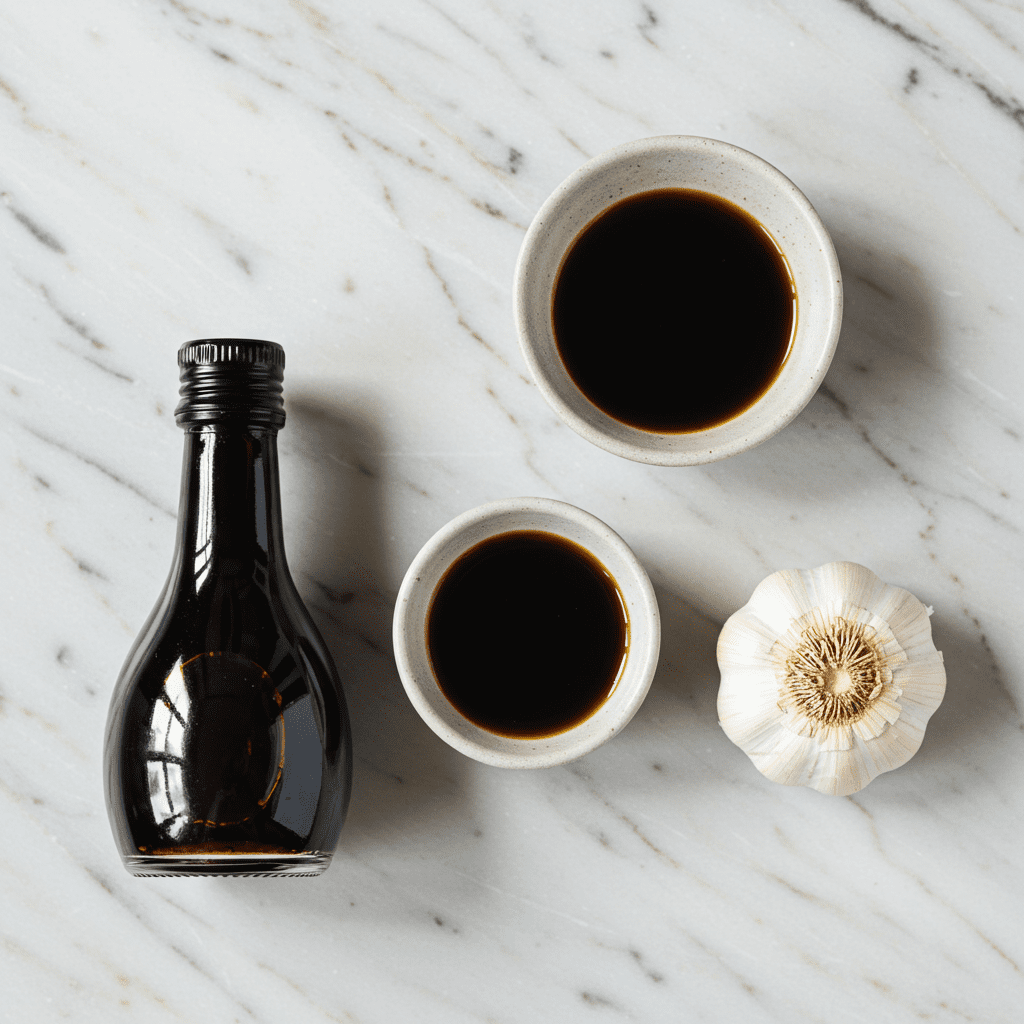
Once your steak is perfectly marinated, how you cook it matters. For the best possible sear, you need to remove the steak from the marinade and pat it thoroughly dry with paper towels on all sides.
A wet steak will steam in the pan or on the grill, preventing that delicious, brown crust from forming. Whether you’re grilling or pan-searing, use high, direct heat to cook the steak quickly.
After cooking, let the steak rest on a cutting board for 5-10 minutes before slicing. This allows the juices to redistribute throughout the meat, ensuring every bite is moist and flavorful.
Always slice tougher cuts like flank and skirt steak against the grain to maximize tenderness.
Conclusion
This simple three-ingredient combination of balsamic vinegar, soy sauce, and garlic is more than just a recipe—it’s a fundamental technique that will change the way you cook. It proves that you don’t need a pantry full of spices or complicated steps to create incredibly flavorful, tender, and memorable meals, whether it’s this steak or a delicious high-protein pizza.
By understanding the science behind how it works, you can confidently use this marinade to elevate everything from a weeknight steak dinner to a weekend barbecue with friends. Keep this trio in your culinary toolkit, and you’ll always have the secret to a delicious meal on hand.
